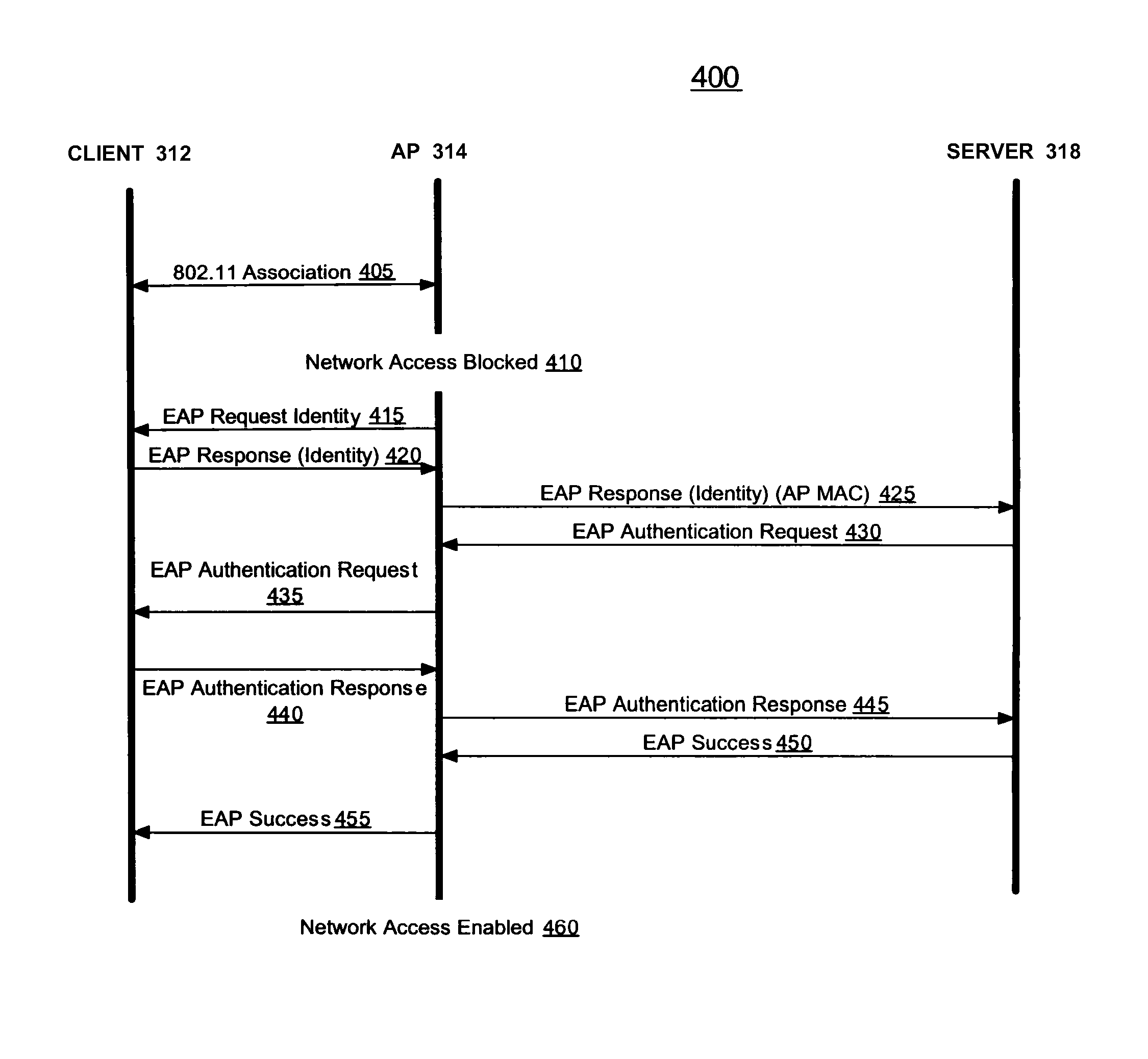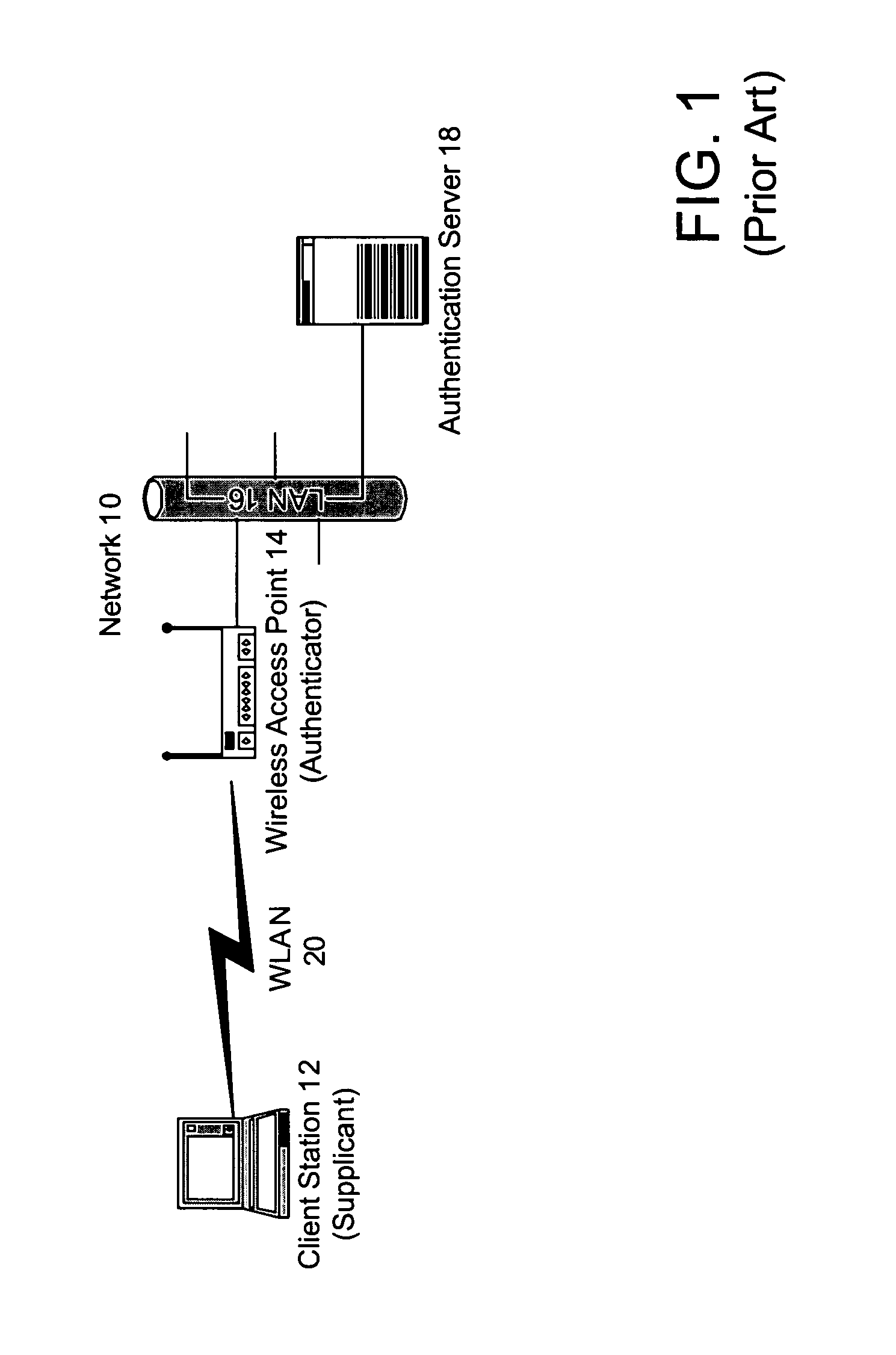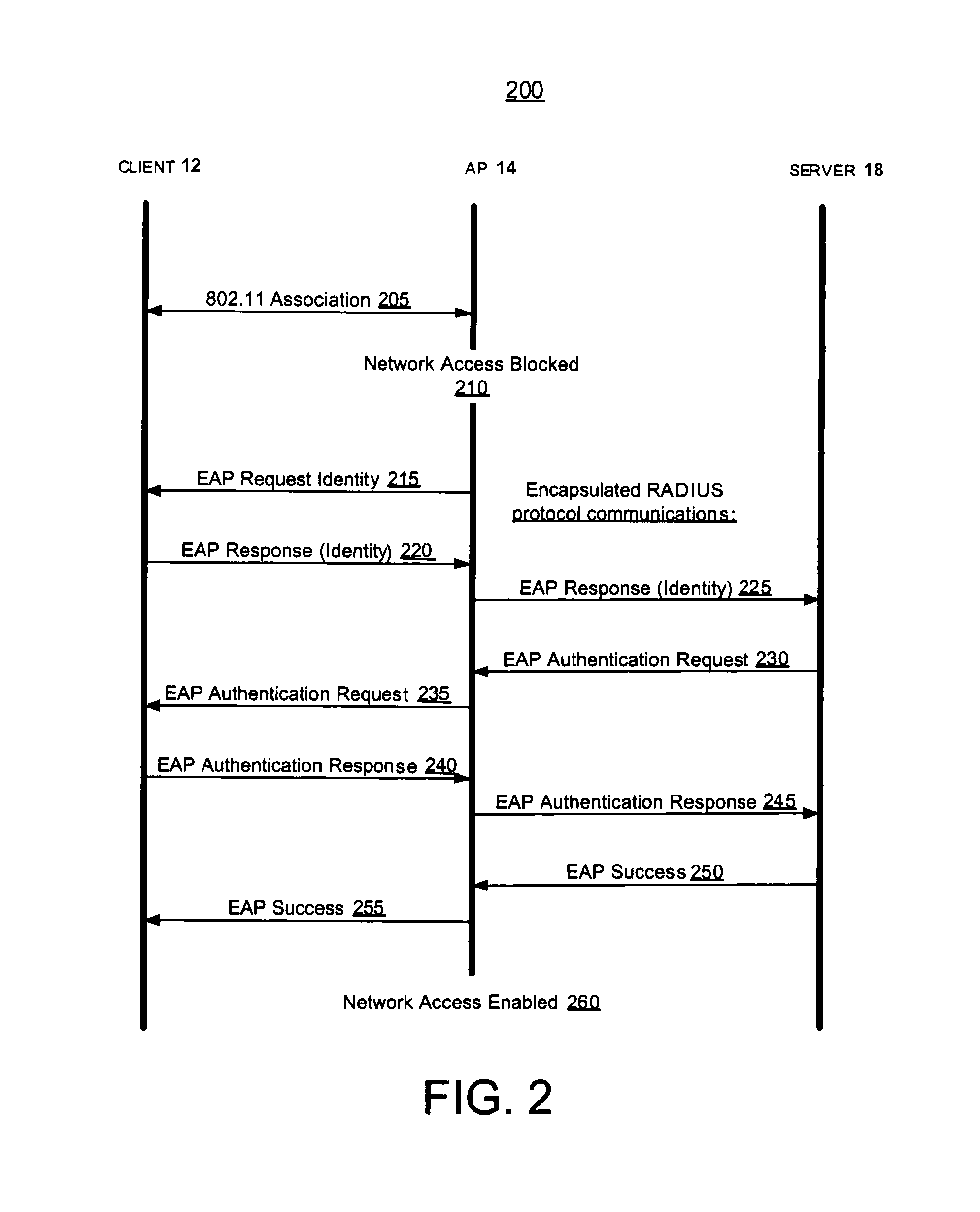Methods and systems for fallback modes of operation within wireless computer networks
a wireless computer network and fallback mode technology, applied in the field of wireless computer network fallback mode, can solve the problems of inability to implement the 802.1x solution for a wlan, the cost and difficulty of deploying access control measures, and the current security mechanisms for maintaining confidentiality, integrity and availability of wireless communications within such networks
- Summary
- Abstract
- Description
- Claims
- Application Information
AI Technical Summary
Benefits of technology
Problems solved by technology
Method used
Image
Examples
Embodiment Construction
[0019]Described herein are methods for fallback operation within WLANs that rely on remote authentication procedures. In the following discussion, much of the information is described in terms of processes and procedures to be implemented by one or more computer systems executing appropriate algorithms which are embodiments of the present invention. An algorithm is here, and generally, conceived to be a self-consistent sequence of steps leading to a desired result. The steps are those requiring physical manipulations of physical quantities. Usually, though not necessarily, these quantities take the form of electrical or magnetic signals capable of being stored, transferred, combined, compared and otherwise manipulated. It has proven convenient at times, principally for reasons of common usage, to refer to these signals as bits, values, elements, symbols, characters, terms, numbers or the like. It should be borne in mind, however, that all of these and similar terms are to be associa...
PUM
 Login to View More
Login to View More Abstract
Description
Claims
Application Information
 Login to View More
Login to View More - R&D
- Intellectual Property
- Life Sciences
- Materials
- Tech Scout
- Unparalleled Data Quality
- Higher Quality Content
- 60% Fewer Hallucinations
Browse by: Latest US Patents, China's latest patents, Technical Efficacy Thesaurus, Application Domain, Technology Topic, Popular Technical Reports.
© 2025 PatSnap. All rights reserved.Legal|Privacy policy|Modern Slavery Act Transparency Statement|Sitemap|About US| Contact US: help@patsnap.com



